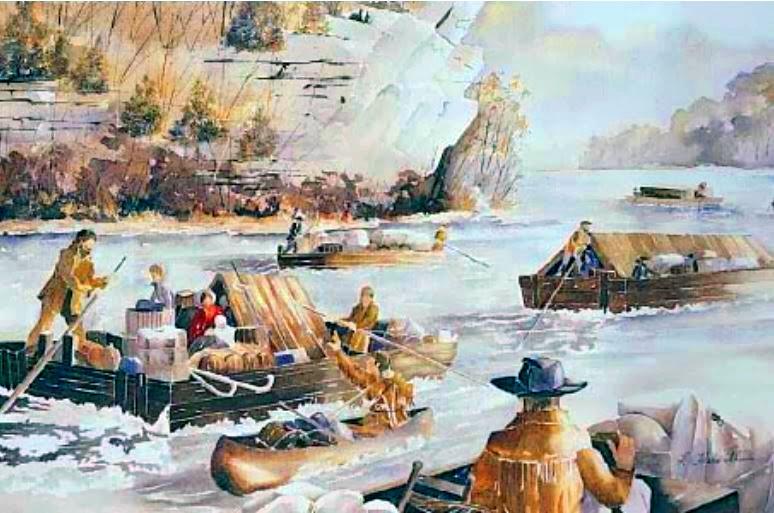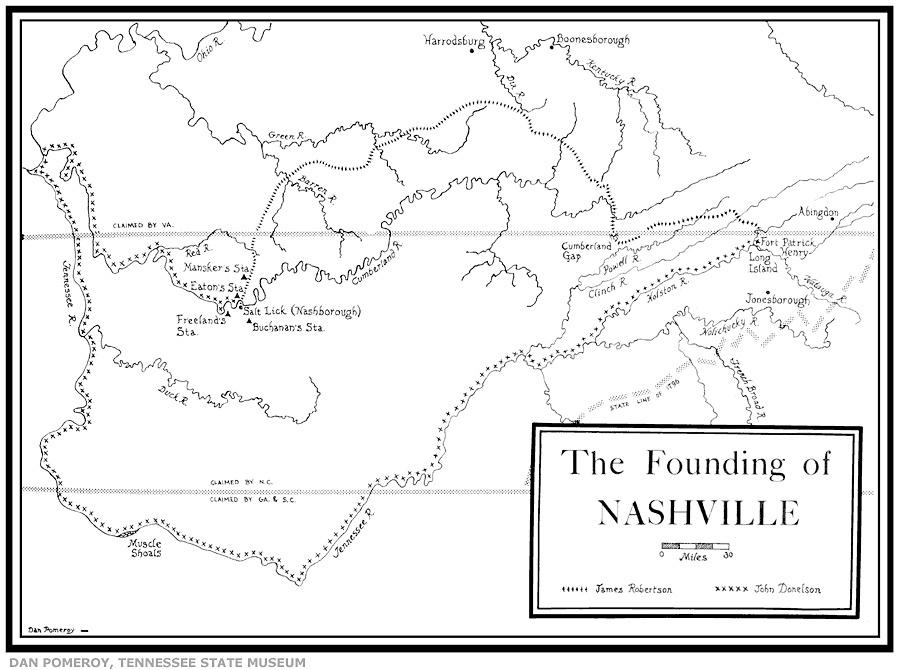
Nashville Early 1800s
Nashville, originally called Nashborough, was established in 1779-80 on the west banks of the Cumberland River.

Illustration by Peggy Harville - Tennessee Blue Book
Two groups of pioneer settlers, led by the founding fathers James Robertson and Colonel John Donelson, came by land and by water from Fort Patrick Henry in east Tennessee. James Robertson led a party of men on foot and horseback, arriving on Christmas Day 1779. John Donelson led a flotilla of approximately thirty flatboats, carrying the wives and children of the men who went with Robertson. Traveling a thousand miles and surviving many hazards including Indian attacks, the Donelson party arrived on April 24, 1780, reuniting some 60 families.

Dan Pomeroy - Tennessee State Museum
For the first twenty years, settlers lived in small groups along the river and surrounding areas. They built forts or stations to protect themselves from Indian attacks. The transition from pioneer settlement to established town came with the defeat of the Indians, with increased traffic on the roads and river, and with statehood in 1796. By 1800, Nashville had a post office, a newspaper, stores and taverns, an inn, and a population that was achieving its goals of becoming merchants, lawyers, politicians, and landowners.
The arrival of the first steamboat in 1819 marked the end of frontier isolation and the beginning of a new age for Nashville. And for whom was this steamboat from New Orleans named? None other than Nashville's own General Jackson.